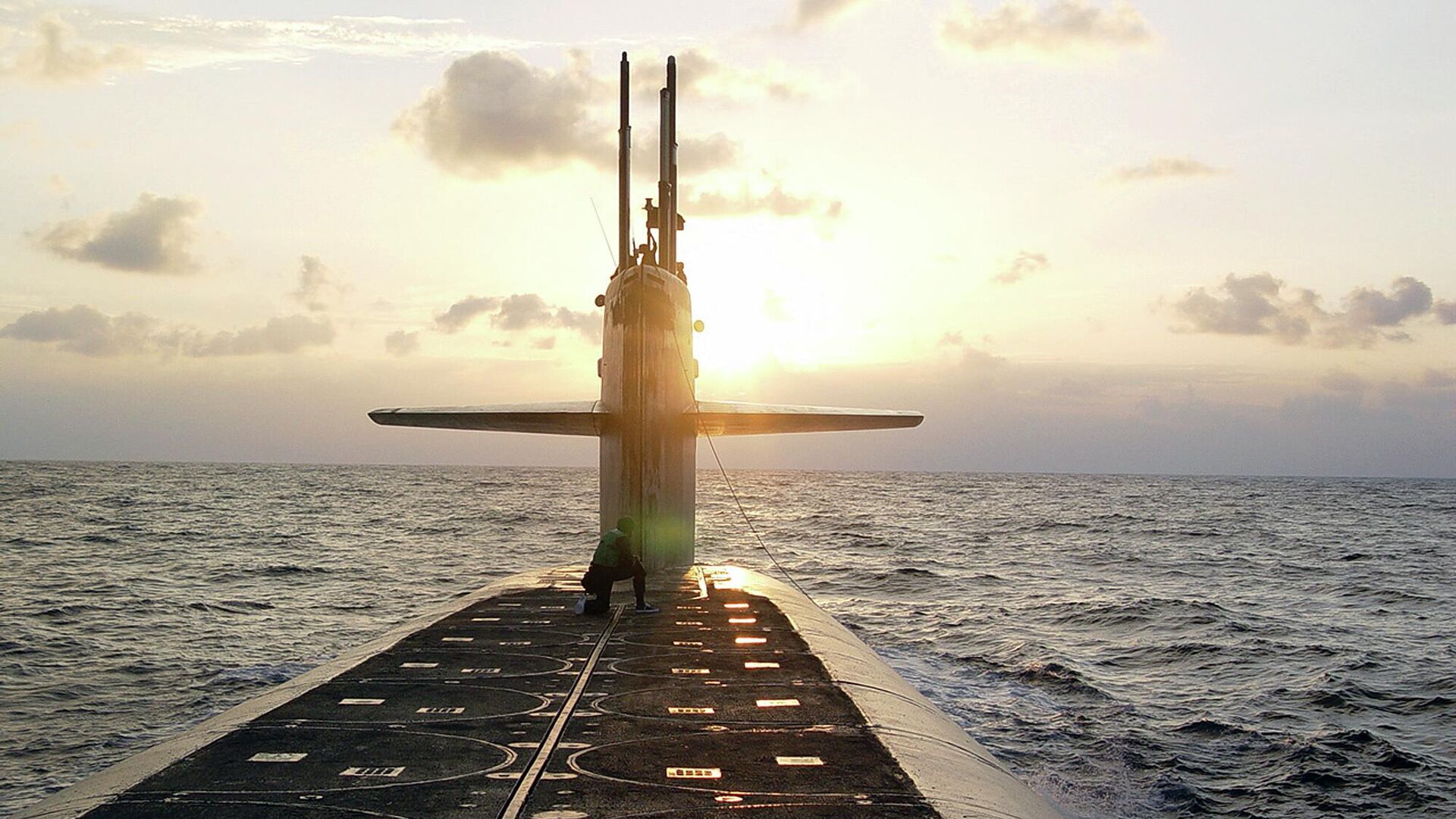https://sputnikglobe.com/20231029/us-peru-joint-navy-drills-reveal-how-sonar-tech-helps-locate-sunken-submarines-1114564436.html
US, Peru Joint Navy Drills Reveal How Sonar Tech Helps Locate Sunken Submarines
US, Peru Joint Navy Drills Reveal How Sonar Tech Helps Locate Sunken Submarines
Sputnik International
US and Peruvian armed forces engaged in joint exercises this week to improve cooperation between the two countries’ navies.
2023-10-29T03:56+0000
2023-10-29T03:56+0000
2023-10-29T03:56+0000
military
us
peru
military & intelligence
lima
sonar systems
submarine
https://cdn1.img.sputnikglobe.com/img/07e6/08/0b/1099495217_0:0:2000:1125_1920x0_80_0_0_04a7eba3693142b900066507d93f305b.jpg
US and Peruvian armed forces engaged in joint exercises this week to improve cooperation between the two countries’ navies.The drill, known as SIFOREX (Silent Forces Exercise) took place from October 20 until the 27th off the coast of Callao, a port city near Lima. The exercises are intended to improve anti-submarine warfare and demonstrated the use of sonar technology to detect sunken submarines.Images released from the exercise demonstrate the impressing imaging capabilities of the technology, which is able to depict the shape of a submerged vessel simply by measuring the reflection of sound waves.Once a sunken submarine is detected, it then becomes a race against time to find it and rescue its crew. The situation is complicated further if the state of a vessel’s nuclear reactor must be taken into account.
peru
lima
Sputnik International
feedback@sputniknews.com
+74956456601
MIA „Rossiya Segodnya“
2023
Sputnik International
feedback@sputniknews.com
+74956456601
MIA „Rossiya Segodnya“
News
en_EN
Sputnik International
feedback@sputniknews.com
+74956456601
MIA „Rossiya Segodnya“
Sputnik International
feedback@sputniknews.com
+74956456601
MIA „Rossiya Segodnya“
us, peru, navies, joint naval drills, sonar technology, sunken submarines
us, peru, navies, joint naval drills, sonar technology, sunken submarines
US, Peru Joint Navy Drills Reveal How Sonar Tech Helps Locate Sunken Submarines
Sonar imaging helps rescuers detect stricken submarines on the ocean floor and rescue their crew members.
US and Peruvian armed forces engaged in
joint exercises this week to improve cooperation between the two countries’ navies.
The drill, known as
SIFOREX (Silent Forces Exercise) took place from October 20 until the 27th off the coast of Callao, a port city near Lima. The exercises are intended to improve anti-submarine warfare and demonstrated the use of sonar technology to detect sunken submarines.
Images released from the exercise demonstrate the impressing imaging capabilities of the technology, which is able to depict the shape of a submerged vessel simply by measuring the reflection of sound waves.
Once a sunken submarine is detected, it then becomes a race against time to find it and rescue its crew. The situation is complicated further if the state of a vessel’s nuclear reactor must be taken into account.
The exercises also included anti-surface warfare (ASuW) and submarine escape and rescue (SMEREX) drills.
The Peruvian scientific research vessel Carrasco was primarily used, a technologically sophisticated ship with various types of sonar equipment as well as separate Autonomous Underwater Vehicles (AUV).


